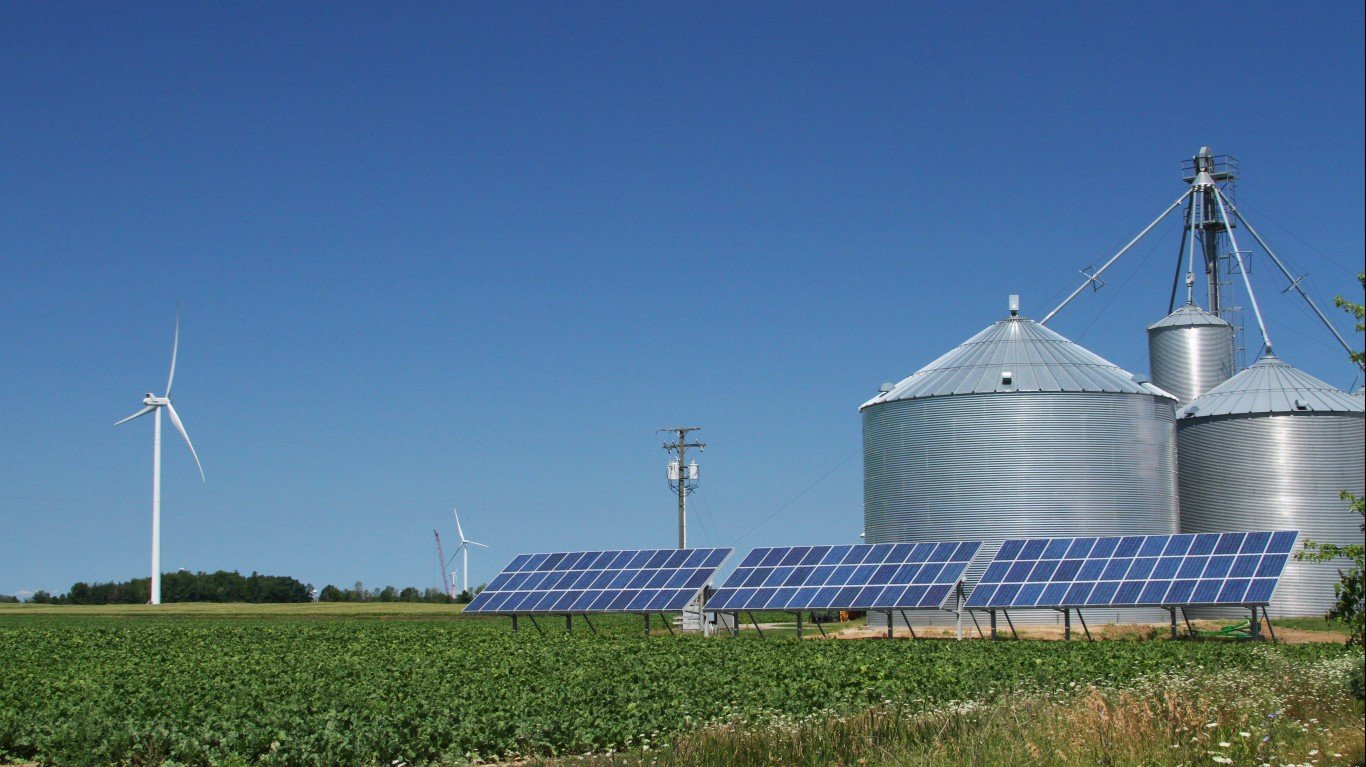

In the wake of the pandemic, with growing economic uncertainty and climate change stressing public infrastructure, more Americans are seeking ways to live off the grid. This does not necessarily mean forgoing all modern conveniences. Rather, living off the grid simply often means just that – being disconnected from local utility grids and having a higher degree of self-sufficiency.
A recent study released by LawnStarter, a lawn care company that frequently conducts research into city and state amenities, created a weighted index of 23 key measures to identify the best states to live off the grid. These measures fall into one of five categories: feasibility, infrastructure, affordability, climate, and safety.
According to LawnStarter, West Virginia ranks as the 21st best state for those seeking to live off the grid.
West Virginia scores highest in the affordability category, which includes measures like the average per-acre value of cropland, the property tax rate, and the overall cost of living. The state’s lowest ranking category is infrastructure, which takes into account measures such as phone coverage, the share of electricity produced from renewable sources, and projected growth of wind and solar power production.
All data in this story is from LawnStarter. A full description of the methodology is available here.
| Rank | State | Overall off-the-grid score | Highest ranking category | Lowest ranking category |
|---|---|---|---|---|
| 1 | Iowa | 67.1 | Safety | Affordability |
| 2 | Texas | 65.6 | Infrastructure | Climate |
| 3 | Kentucky | 63.4 | Safety | Infrastructure |
| 4 | Minnesota | 61.3 | Safety | Climate |
| 5 | Oklahoma | 61.1 | Affordability | Climate |
| 6 | Nebraska | 61.0 | Safety | Climate |
| 7 | Kansas | 60.6 | Safety | Feasibility |
| 8 | North Dakota | 59.5 | Feasibility | Climate |
| 9 | Illinois | 58.9 | Safety | Affordability |
| 10 | Montana | 58.5 | Affordability | Climate |
| 11 | Missouri | 58.3 | Safety | Infrastructure |
| 12 | Wyoming | 57.8 | Affordability | Climate |
| 13 | South Dakota | 57.7 | Infrastructure | Climate |
| 14 | Wisconsin | 57.2 | Safety | Climate |
| 15 | Vermont | 56.9 | Infrastructure | Affordability |
| 16 | Arkansas | 56.8 | Climate | Infrastructure |
| 17 | Idaho | 56.6 | Feasibility | Climate |
| 18 | Tennessee | 55.5 | Affordability | Feasibility |
| 19 | Oregon | 55.2 | Feasibility | Climate |
| 20 | Maine | 54.3 | Infrastructure | Affordability |
| 21 | West Virginia | 54.1 | Affordability | Infrastructure |
| 22 | Indiana | 52.9 | Infrastructure | Feasibility |
| 23 | Georgia | 52.4 | Climate | Infrastructure |
| 24 | Ohio | 52.3 | Safety | Climate |
| 25 | Louisiana | 52.2 | Climate | Infrastructure |
| 26 | Mississippi | 52.2 | Safety | Infrastructure |
| 27 | Washington | 51.1 | Infrastructure | Climate |
| 28 | New Hampshire | 51.0 | Safety | Affordability |
| 29 | Alabama | 51.0 | Affordability | Feasibility |
| 30 | Virginia | 50.8 | Climate | Safety |
| 31 | South Carolina | 50.4 | Climate | Safety |
| 32 | New Mexico | 50.0 | Affordability | Safety |
| 33 | Hawaii | 49.6 | Climate | Affordability |
| 34 | California | 49.1 | Infrastructure | Affordability |
| 35 | Colorado | 48.1 | Affordability | Feasibility |
| 36 | Florida | 47.9 | Climate | Safety |
| 37 | Michigan | 47.9 | Safety | Climate |
| 38 | North Carolina | 46.8 | Climate | Feasibility |
| 39 | Delaware | 46.0 | Climate | Safety |
| 40 | Arizona | 46.0 | Climate | Affordability |
| 41 | New York | 45.5 | Infrastructure | Feasibility |
| 42 | Utah | 40.6 | Affordability | Safety |
| 43 | Alaska | 40.1 | Feasibility | Infrastructure |
| 44 | Pennsylvania | 40.0 | Climate | Feasibility |
| 45 | Nevada | 39.4 | Affordability | Safety |
| 46 | Massachusetts | 37.6 | Climate | Feasibility |
| 47 | Maryland | 36.6 | Climate | Feasibility |
| 48 | Connecticut | 34.5 | Climate | Feasibility |
| 49 | Rhode Island | 33.5 | Climate | Feasibility |
| 50 | New Jersey | 28.2 | Climate | Affordability |
Sponsored: Find a Qualified Financial Advisor
Finding a qualified financial advisor doesn’t have to be hard. SmartAsset’s free tool matches you with up to 3 fiduciary financial advisors in your area in 5 minutes. Each advisor has been vetted by SmartAsset and is held to a fiduciary standard to act in your best interests. If you’re ready to be matched with local advisors that can help you achieve your financial goals, get started now.
Thank you for reading! Have some feedback for us?
Contact the 24/7 Wall St. editorial team.

